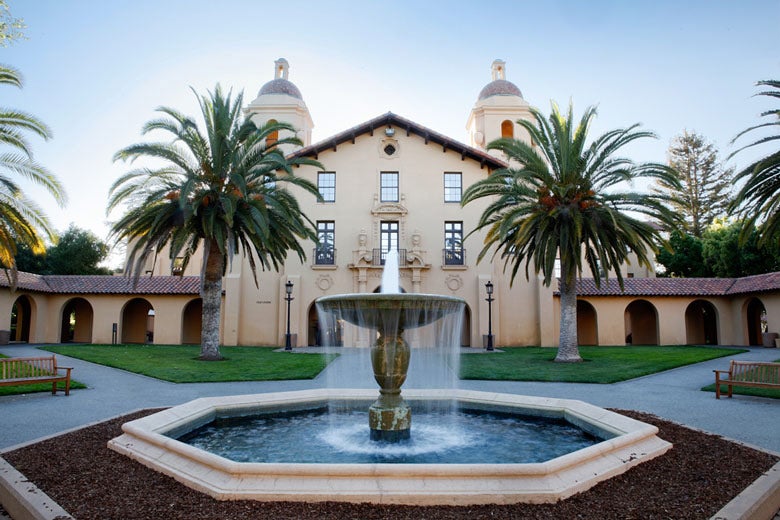
The fountain in front of Old Union is among 18 fountains on campus that will be turned on during the days leading up to Commencement activities the weekend of June 14. All the fountains will go dry again the next day as part of Stanford’s continuing response to the California drought. (Image credit: Ian Terpin/University Communications)
After more than a year, the Stanford community will once again – albeit briefly – have the opportunity to enjoy the sounds and the sight of water cascading from 18 of the university’s 21 campus fountains.
The university’s fountains, which were shut down and drained in response to California’s prolonged drought, slowly will be brought back to operation beginning June 1 with the Tanner Fountain in front of Memorial Auditorium and the Serra Fountain in front of the Hewlett Teaching Center. The White Memorial Fountain, located in White Plaza, will be back on line June 4, along with the fountain in front of Old Union.
By June 9, all 18 fountains will be operating. Fountains in areas overseen by Residential and Dining Enterprises, however, will remain off. The 18 affected fountains again will be shut off on June 15, after Commencement weekend.
The fountains’ brief return will require about 60,000 gallons of water, according to Jack Cleary, associate vice president of Land, Buildings and Real Estate. The fountains will continuously re-circulate the 60,000 gallons. When the fountains are again shut down, that water will be stored and used throughout the summer to perform already planned, routine tree irrigation.
The university’s 21 fountains have been off for more than a year as part of Stanford’s efforts to cut water use in light of the drought in California and much of the West. In January 2014, Gov. Jerry Brown issued a declaration of emergency because of severe water shortage conditions.
“We were not required to turn them off as part of the mandated reductions,” Cleary said. “However, we elected to turn them off last year to conserve water from non-essential uses.”
The fountains are being briefly reactivated in celebration of Commencement, according to Cleary. But the brief reactivation also allows grounds crews to perform maintenance – especially leak detection – on fountains whose operations may have been affected by the shutdown.
“I think we all realized during the past year that a traditional celebration like Commencement is enhanced by having the fountains on,” Cleary said. “The fountains make our campus even more beautiful, and we know that makes a big difference for graduates and their families during a very special time in their lives.”
Since 2000, Stanford’s overall water conservation programs have reduced university domestic (drinkable or potable) water use by about 20 percent. The Stanford Energy System Innovations project, which went online in April, is further reducing potable water use another 15 percent.
In addition, from February to October of last year, water conservation measures resulted in a 4.5 percent reduction in domestic water use and an 18 percent reduction in non-potable use.